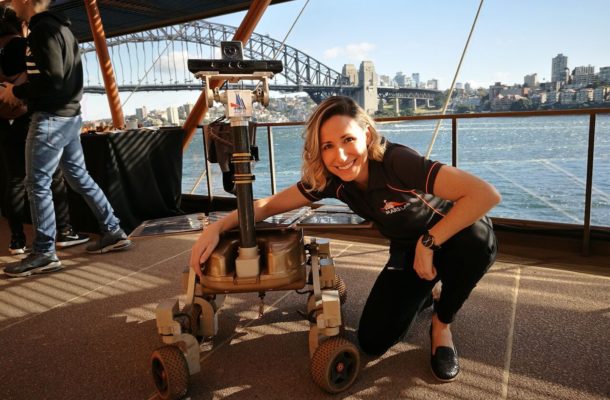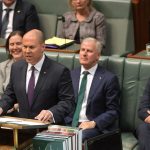Inspiring a nation with space exploration

A national space agency will not only bring economic benefits but it will also inspire the nation with it’s hi-tech vision. Science communicator Isabelle Kingsley considers the broader benefits of an Australian space agency.
Education Minister Simon Birmingham announced Australia would have a national space agency at the International Astronautical Congress (IAC) in Adelaide in September.
The 4,000 international delegates — 30% from Australia — exploded into cheer. The announcement was completely unexpected and a delightful shock, after more than half a century of resisting the obvious. Australia had finally recognised the need to be part of the global space conversation.
While there are practical reasons for Australia’s formal involvement in civil and defence space, there is one reason that underlies the existence of all space agencies — inspiring a nation with the hi-tech vision of space exploration. The reason is primarily economic: to engage in a global industry worth hundreds of billions of dollars a year. Equally, it also drives public and student inspiration in Science, Technology, Engineering and Mathematics (STEM) and in the nation’s space-related engineering and science innovation.
Space pulls at the heartstrings
For thousands of years, people have looked up at the sky and marvelled at the wonders of the universe. Space moves us to contemplate our own significance and drives us to explore the fundamental questions about our place in the Universe — where did we come from and are we alone? Space is compelling.
Michael Pakakis, Director of the Victorian Space Science Education Centre (VSSEC), and a teacher for 32 years, maintains that making any subject space-related sees engagement go up 100%. Space inspires and engages.
For example, in 2012 the Canberra Deep Space Communication Complex, part NASA’s Deep Space Network, was responsible for guiding the landing of the Curiosity Mars rover. Millions of people around the world watched the landing known as the ‘seven minutes of terror’. At Tidbinbilla, the public packed out the visitor centre with 350 attendees squeezed in to share the moment in nervous anticipation as NASA attempted to delicately land a rover the size of a car on Mars.
The Parkes radio telescope, which brought pictures of Neil Armstrong’s first steps on the moon minutes after being captured first by another Australian telescope then at Honeysuckle Creek, has a visitor centre that attracts 100,000 visitors a year. This is in spite of the remote location in a field six hours west of Sydney and 20 kilometres from the nearest town, Parkes.
Yet, despite the worthy achievements of our country in the space industry, many Australians would not know of them. In 2014, Dr Suzette Searle from Australian National University did a study on Australians engagement with science and was disappointed to find that “around one in two Australians are not spontaneously aware of any of our achievements, let alone feel a sense of pride about them.”
The Government’s efforts in engaging Australians with science and technology could benefit from the exposure, excitement and sense of pride that a national space agency will generate. Space exploration is a visionary endeavour and inspires not just those who work in the industry but the public as well.
Isabelle Kingsley is a PhD candidate at the University of New South Wales investigating the impacts of science communication and education on public scientific literacy. Isabelle started her career as a high school science teacher before changing paths to work in the field of science communication and education at various museums in Canada and Australia. Most recently, Isabelle was director of the Sydney Science Festival, an annual festival that engages people of all ages in celebrating and appreciating science.















